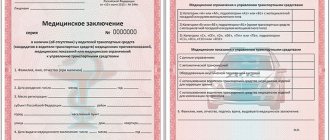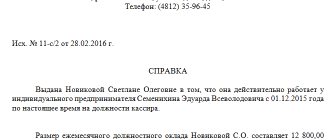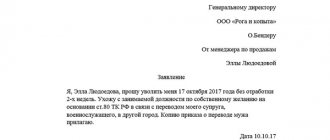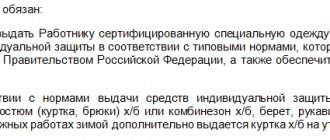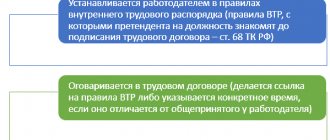Labor protection is a system for preserving the life and health of workers in the process of work, which includes legal, socio-economic, organizational, technical, sanitary and hygienic, treatment and preventive, rehabilitation and other measures.
Working conditions are a set of factors in the working environment and the labor process that affect the performance and health of the employee.
A harmful production factor is a production factor, the impact of which on an employee can lead to illness.
A hazardous production factor is a production factor, the impact of which on a worker can lead to injury.
Safe working conditions are working conditions under which workers are excluded from exposure to harmful and (or) hazardous production factors or their exposure levels do not exceed established standards.
Workplace is a place where an employee must be or where he needs to arrive in connection with his work and which is directly or indirectly under the control of the employer.
Personal and collective protective equipment for workers are technical means used to prevent or reduce the impact of harmful and (or) hazardous production factors on workers, as well as to protect against pollution.
The occupational safety management system is a complex of interrelated and interacting elements that establish policies and goals in the field of occupational safety for a particular employer and procedures for achieving these goals. Typical provision
on the occupational safety and health management system is approved by the federal executive body exercising the functions of developing state policy and legal regulation in the field of labor, taking into account the opinion of the Russian Tripartite Commission for the Regulation of Social and Labor Relations.
(part eight as amended by the Federal Law
dated December 28, 2013 N 421-FZ)
Production activity is a set of actions of workers using means of labor necessary to transform resources into finished products, including the production and processing of various types of raw materials, construction, and the provision of various types of services.
Labor protection requirements - state regulatory labor protection requirements, including labor safety standards, as well as labor protection requirements established by rules and instructions
on labor protection.
(Part ten was introduced by Federal Law
dated June 30, 2006 N 90-FZ, as amended.
Federal Law
of July 24, 2009 N 206-FZ)
State examination of working conditions - assessment of the compliance of the object of examination with state regulatory requirements for labor protection.
(part eleven was introduced by Federal Law
dated June 30, 2006 N 90-FZ)
Part twelve became invalid on January 1, 2014. - The federal law
dated December 28, 2013 N 421-FZ.
Occupational safety standards are rules, procedures, criteria and standards aimed at preserving the life and health of workers in the process of work and regulating the implementation of socio-economic, organizational, sanitary and hygienic, treatment and preventive, rehabilitation measures in the field of labor protection.
(Part thirteen was introduced by Federal Law
dated July 24, 2009 N 206-FZ)
Occupational risk is the likelihood of harm to health as a result of exposure to harmful and (or) hazardous production factors when an employee performs duties under an employment contract or in other cases established by this Code and other federal laws. The procedure for assessing the level of occupational risk is established by the federal executive body that carries out the functions of developing state policy and legal regulation in the field of labor, taking into account the opinion of the Russian Tripartite Commission for the Regulation of Social and Labor Relations.
(part fourteen was introduced by Federal Law
dated July 18, 2011 N 238-FZ)
Occupational risk management is a set of interrelated activities that are elements of the occupational safety management system and include measures to identify, assess and reduce levels of occupational risks.
(part fifteen as amended by the Federal Law
dated December 28, 2013 N 421-FZ)
General requirements
Requirements for the organization of a work zone are regulated by:
- SanPiNom;
- SNiP, etc.
These standards have one goal - they are designed to ensure safe and comfortable working conditions in workers’ workplaces, and to prevent the occurrence of occupational diseases and accidents.
A set of measures aimed at achieving this goal is usually called labor protection.
Let's consider the basic labor protection requirements for the employee's workplace.
Rights and responsibilities of employees that cannot be neglected
The Labor Code of the Russian Federation provides the text of the mandatory duties of employees, the level of which cannot be reduced under any working conditions and employment conditions. It also lists the rights of employees, which are guaranteed unconditionally. Such rights and responsibilities are called fundamental . They cannot be reduced by the employer - neither unilaterally, nor even by mutual consent, since they are strictly declared by law, and the direct responsibility of the employer is to ensure them. Neglect of this rule of law is fraught with liability.
Main responsibilities of hired personnel
As part of his individual employment contract, the employee is obliged to comply with the following obligations.
- The labor functions assigned by the contract to the hired employee are subject to strict performance to the extent specified in the contract.
- The internal regulations adopted by the local act of the enterprise become the norm for the employee, which he is obliged to adhere to.
- Any employee is subject to the requirements of labor discipline.
- Labor safety and protection, expressed in the rules adopted by the organization, is also a strict guide to compliance.
- In the process of work, the employee must achieve compliance with accepted labor standards.
- The property fund of the enterprise, material assets belonging to the employer or accepted by him for safekeeping from other persons, require careful treatment and safety on the part of the staff.
- If circumstances arise that may threaten the life, health or safety of property of personnel, the employer or third parties located at the enterprise, the employee’s duty is to inform his immediate supervisor about this as soon as possible.
- Recognize the significance of the concept of “trade secret” and, in general, any information data related to the work:
- if the employer has established one or another secrecy regime, comply with it;
- do not use information about the company for personal purposes and do not transfer it without the consent of the employer;
- if cooperation is terminated, all information media must be returned if they contain trade secrets, or such information must be destroyed in front of the employer.
NOTE! These obligations, given in the Labor Code in a general form, are specified or extended in specific cooperation agreements, additional agreements thereto, regulations, and instructions.
Indoor microclimate
Special requirements are placed on the indoor microclimate. The fact is that too high or too low ambient temperature is one of the factors that inhibits performance. That's why:
- when the temperature outside is below 10 °C, the temperature in the room should be at least 22-24 °C;
- when the outdoor temperature is more than 10 °C, the indoor temperature should be between 23-25 °C.
If these standards are not observed, the length of the working day is reduced in accordance with the conditions of SanPiN 2.2.4.3359-16 dated June 21, 2016 No. 81.
Protection of employee rights
Everyone has the right to protect their labor rights and freedoms by all means not prohibited by law. The main ways to protect labor rights and freedoms include:
- self-defense of labor rights by employees;
- protection of labor rights and legitimate interests of workers by trade unions;
- state control (supervision) over compliance with labor legislation and other regulatory legal acts containing labor law norms;
- judicial protection.
Let's take a closer look at each method of protection.
Protection from negative effects of PC
Many employees use PCs while performing their job duties. In this regard, special standards have been developed that should be taken into account when working with computer equipment. The requirements for an office workplace are as follows:
- sanitary requirements for the organization of the workplace indicate that when working with a PC with a flat-panel monitor, the work area must have an area of at least 4.5 m². In case of using a kinescope monitor - 6 m²;
- the room must be ventilated every hour;
- sanitary requirements for a workplace located in the basement state that the use of copiers, printers and other office equipment is unacceptable (SanPiN 2.2.2.1332-03).
Also, SanPiN 2.2.2/2.4.1340-03 dated 05/30/2003 (as amended) informs about what requirements the design of the workplace must meet, what the height and width of the worktable should be, and the presence of a special footrest.
Regulatory acts regulate the level of electrostatic and electromagnetic fields, as well as radiation, ultraviolet radiation, radio frequency ranges, etc. That is, all those factors that do not have the best effect on the health of workers.
What requirements must an employee’s workplace meet?
Occupational safety is a primary requirement!
The most important requirement when organizing a workplace is to ensure safe, comfortable working conditions and to prevent the occurrence of occupational diseases and accidents. This entire set of measures is called occupational safety and health.
In other words, labor protection, in essence, is a system of legislative acts in conjunction with socio-economic, organizational, technical, hygienic, therapeutic and preventive measures and means that ensure safe working conditions and the preservation of the health of enterprise employees.
To do this, it is necessary to create favorable working conditions in accordance with sanitary standards, safety regulations, ergonomics, and aesthetics.
Indoor microclimate
The legislation of our country strictly regulates the temperature and humidity of indoor air. In particular, when the average daily temperature outside is below 10°C, the amplitude of its fluctuations indoors should be 22-24°C. When the ambient temperature is higher than the specified value - 23-25°C. In case of temporary non-compliance with these conditions in one direction or another, the length of the working day is reduced (SanPiN 2.2.4.3359-16 dated June 21, 2021 No. 81).
Protection from the harmful effects of computer technology
Since today it is impossible to imagine office work without a PC, there are standards for employees who use computer equipment in their work. For example, when working with a computer with a flat-panel monitor, the workplace must have an area of at least 4.5 square meters. m, when using a kinescope monitor - 6 sq.m. After each hour of operation, the room must be ventilated (SanPiN 2.2.2/2.4.1340-03 dated May 30, 2003). The same regulatory act regulates the height, width and depth of the feet under the desk, and stipulates the mandatory presence of a footrest with a corrugated surface.
The level of electrostatic and electromagnetic fields, radiation and ultraviolet radiation, radio frequency ranges and other factors harmful to the health of employees are also regulated.
Attention! The use of copiers, printers and other office equipment is prohibited in basements, and for ordinary offices, appropriate standards for the distance between technical equipment have been established (SanPin 2.2.2. 1332-03).
Lighting requirements
Also, the relevant articles of SanPin establish standards for lighting. For example, the illumination in the room should be between 300 and 500 lux. When using artificial lighting, lighting parameters must ensure good visibility of the information displayed on the personal computer screen. For local lighting, lamps installed on work tables or specially equipped panels for vertical installation are recommended (SanPiN 2.2.1/2.1.1.).
Noise requirements
The maximum threshold for noise level is 80 decibels (SanPin 2.2.4. 3359-16). Regulatory documents provide for the installation of special foundations or shock-absorbing pads under the main noise-producing equipment and other equipment, as well as the use of noise-absorbing materials.
Providing conditions for eating
The procedure for eating at the workplace is regulated by Article 108 of the Labor Code of the Russian Federation, SNiP 2.09.04-87:
- if the number of employees is less than 10 people, a space of at least 6 square meters is required. m, equipped with a dining table;
- with up to 29 employees, the required area is twice as large;
- if the enterprise employs up to 200 employees, it is obligatory to have a canteen-serving area;
- if the number of employees exceeds 200, the canteen must be provided with raw materials or semi-finished products.
Can an employer not create conditions for eating ?
Unregulated situations
If situations arise that are not regulated by sanitary and hygienic standards (the roof is leaking, the toilet is faulty, etc.), the employee has the right to refuse work. In this case, the employer is obliged to offer him other employment until the problem is completely eliminated. If such a decision is impossible, according to Article 157 of the Labor Code of the Russian Federation, the employer is obliged to declare downtime and pay a penalty in the amount of at least 2/3 of the employee’s average salary.
Of the ergonomic requirements for the workplace, the following should be additionally noted:
- Selection of a rational location of the working surface and zone, taking into account the anthropometric data of a particular employee.
- Provision of measures to prevent or reduce premature fatigue of an employee, the occurrence of a stressful situation in him, taking into account the physiological, psychophysiological characteristics of a person and his character. By the way, according to psychologists, workers who constantly use electronic computers in their work are much more exposed to stress than their less “advanced” colleagues.
- Ensuring speed, safety and ease of maintenance in both normal and emergency operating conditions.
Technical parameters include equipment with innovative technology, devices, laboratory equipment, load-moving mechanisms, etc.
Conditions for eating
According to Article 108 of the Labor Code of the Russian Federation, the boss is obliged to provide employees with a lunch break.
SNiP 2.09.04-87 reveals in detail the conditions that the boss must adhere to when organizing places for rest and food for workers:
- if the organization has less than 10 people, it is necessary to equip a place for eating with an area of at least 6 m², which must be equipped with a dining table;
- if the enterprise employs up to 29 people, the area for food and recreation should be twice as large;
- if you have up to 200 employees, you need to equip a canteen-serving area;
- in large companies with more than 200 employees, raw materials for cooking or semi-finished products should be delivered to the canteen.
Newly created workplace
According to Article 209 of the Labor Code of the Russian Federation, a workplace is a territory (place) where an employee is obliged to work or where he must arrive in connection with his work. It must be controlled by the employer directly or indirectly. A newly created workplace is a place where an employee has begun to perform work functions that were not previously performed by anyone. The new workplace must be put into operation so that the new working conditions can be assessed directly during the work process. The moment of commissioning of a newly created place is considered to be the start of the production process. For example, a new driver’s workplace will be put into effect at the moment when he starts working behind the wheel of a vehicle that was previously not driven by anyone at this enterprise.
Self-defense
For the purpose of self-defense of labor rights, an employee, having notified the employer or his immediate supervisor or another representative of the employer in writing, may refuse to perform work not provided for in the employment contract, as well as refuse to perform work that directly threatens his life and health. During the period of refusal of the specified work, the employee retains all rights provided for by labor legislation and other acts containing labor law norms.
At the same time, the employer or the employer’s representatives do not have the right to prevent employees from exercising self-defense of labor rights.
State control
Federal state supervision over compliance with labor legislation and other regulatory legal acts containing labor law norms is carried out by the federal labor inspectorate.
The Federal Labor Inspectorate
is a single centralized system consisting of a federal executive body authorized to conduct federal state supervision over compliance with labor legislation and other regulatory legal acts containing labor law norms, and its territorial bodies (state labor inspectorates).
The Federal Labor Inspectorate, among other things, receives and considers applications, letters, complaints and other requests from citizens about violations of their labor rights, takes measures to eliminate identified violations and restore violated rights.
It also provides information and consultation to employees on compliance with labor laws and other regulatory legal acts containing labor law standards.
